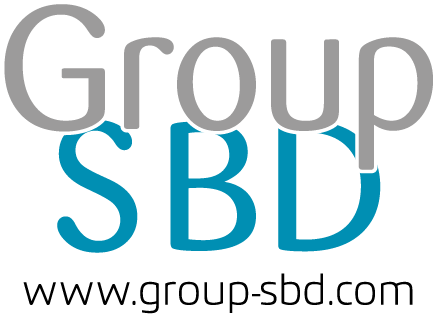Exercise in primary headaches: physiological mechanisms of action
L’exercici en les cefalees primàries: mecanismes fisiològics d’acció
Authors: Jordi Padrós Augé
Keywords: Primary headaches. Exercise. Migraine
Keywords: Cefalees primàries. Exercici. Migranya
Abstract: Exercise is the most recommended non-pharmacological treatment for headaches. Specifically, primary headaches benefit from regular exercise practice. However, each exercise modality results in different physiological adaptations and, therefore, may have specific indications considering the particular pathophysiological mechanisms of each type of headache.
Abstract : L’exercici és la forma de tractament no farmacològic més recomanat en les cefalees, en especial les cefalees primàries es beneficien de la pràctica regular d’exercici. No obstant, cada modalitat d’exercici resulta en adaptacions fisiològiques diferents i per tant, poden tenir indicacions específiques considerant els mecanismes fisiopatològics particulars de cada forma de cefalea.
08-12-2024
Jordi Padrós Augé
0 Comments
| Citation: Jordi Padrós Augé. L’exercici en les cefalees primàries: mecanismes fisiològics d’acció. https://doi.org/10.24175/sbd.2024.000059 |
| Received: December 08, 2024 Accepted: December 08, 2024 Published: December 08, 2024 |
| Copyright: © 2024 Jordi Padrós Augé. This is an open access article distributed under the terms of the Creative Commons Attribution License (CC BY-NC), which allows, distribution, reproduction in any medium, provided the original author and source are credited and non-commercial use. |
| Funding: I certify that all financial and material support for the conduct of this study and/or preparation of this manuscript is clearly described in the manuscript. |
| Conflicts of Interest: The following statement regarding conflicts of interest and financial support for conduct of this study and/or preparation of this manuscript is to be published in the Compliance with Ethical Standards section of the manuscript. |
L'exercici en les cefalees primàries: mecanismes fisiològics d'acció
Jordi Padrós Augé
PhT, MSc, PhDS, Fisioterapeuta con interés en el ámbito de las cefaleas y el dolor orofacial. Máster en Investigación Clínica Aplicada a las Ciencias de la Salud (UAB)
Autor per correspondència
Jordi Padrós Augé, jpadros@umanresa.cat
Paraules clau: Cefalees primàries, Exercici, Migranya.
RESUM
Introducció
L'exercici és la forma de tractament no farmacològic més recomanat en les cefalees, en especial les cefalees primàries es beneficien de la pràctica regular d'exercici. No obstant, cada modalitat d'exercici resulta en adaptacions fisiològiques diferents i per tant, poden tenir indicacions específiques considerant els mecanismes fisiopatològics particulars de cada forma de cefalea.
Objectius
Revisar la interacció entre les diferents modalitats d'exercici amb els mecanismes fisiopatològics de les cefalees primàries.
Mètodes
Es realitza una revisió narrativa a partir d'una recerca sistemàtica de la literatura per tal d'identificar assajos clínics que analitzin modalitats d'exercici cardiovascular i de força per al seu anàlisi des del punt de vista d'interacció amb mecanismes fisiopatològics en les cefalees.
Resultats
S'identifiquen estudis que analitzen la interacció de diferents intensitats d'exercici cardiovascular amb variables relacionades amb la vasculatura intracraneal i amb el to de la via endocannabinoide en la migranya. L'exercici de força craniocervical i de força de la cintura escapular es relacionen amb la coordinació, força resistència i sensibilitat pericranial tant en migranya com en cefalea tensional.
Discussió
Els efectes de l'exercici es relacionen amb adaptacions beneficioses sobre els mecanismes fisiopatològics de les cefalees primàries. No obstant, la qualitat metodològica disminueix la confiança en els resultats. Futures línies d'investigació haurien de centrar-se en reafirmar aquestes conclusions i explorar nous mecanismes que facilitin la comprensió de la interacció de l'exercici amb les cefalees primàries.
Conclusions
L'exercici interactua amb els mecanismes fisiopatològics de les cefalees primàries de diferent forma segons la modalitat terapèutica. Cal buscar prescriure exercici de precisió orientat a cada tipus de cefalea, als seus fenotips i mecanismes fisiopatològics i funcionals.
Exercise in primary headaches: physiological mechanisms of action
Jordi Padrós Augé
PhT, MSc, PhDS, Physiotherapist with interest in the field of headaches and orofacial pain. Master in Clinical Research Applied to Health Sciences (UAB)
Corresponding author
Jordi Padrós Augé, jpadros@umanresa.cat
Keywords: Primary headaches, Exercise, Migraine.
Introduction
Exercise is the most recommended non-pharmacological treatment for headaches. Specifically, primary headaches benefit from regular exercise practice. However, each exercise modality results in different physiological adaptations and, therefore, may have specific indications considering the particular pathophysiological mechanisms of each type of headache.
Objectives
To review the interaction between different exercise modalities and the pathophysiological mechanisms of primary headaches.
Methods
A narrative review is conducted based on a systematic literature search to identify clinical trials analyzing cardiovascular and strength exercise modalities, focusing on their interaction with pathophysiological mechanisms in headaches.
Results
Studies that analyze the interaction of different intensities of cardiovascular exercise with variables related to intracranial vasculature and endocannabinoid pathway tone in migraines are identified. Cervicocranial and shoulder girdle strength exercises are associated with coordination, endurance, and pericranial sensitivity in both migraine and tension-type headache.
Discussion
The effects of exercise relate to beneficial adaptations on the pathophysiological mechanisms of primary headaches. However, methodological quality decreases confidence in the results. Future research should focus on reaffirming these conclusions and exploring new mechanisms that facilitate understanding of the interaction between exercise and primary headaches.
Conclusions
Exercise interacts with the pathophysiological mechanisms of primary headaches in different ways depending on the therapeutic modality. Precision exercise prescriptions should be developed tailored to each headache type, phenotype, and its pathophysiological and functional mechanisms.





